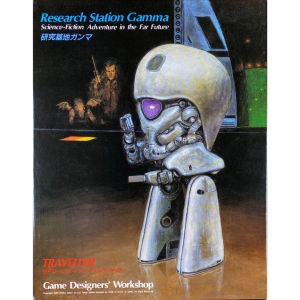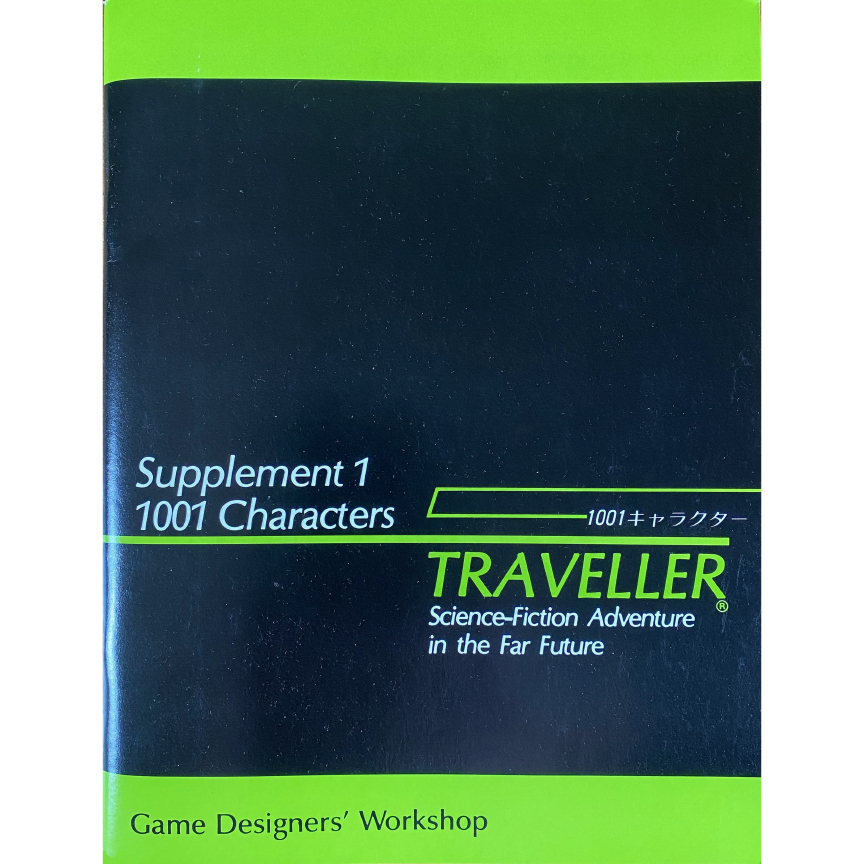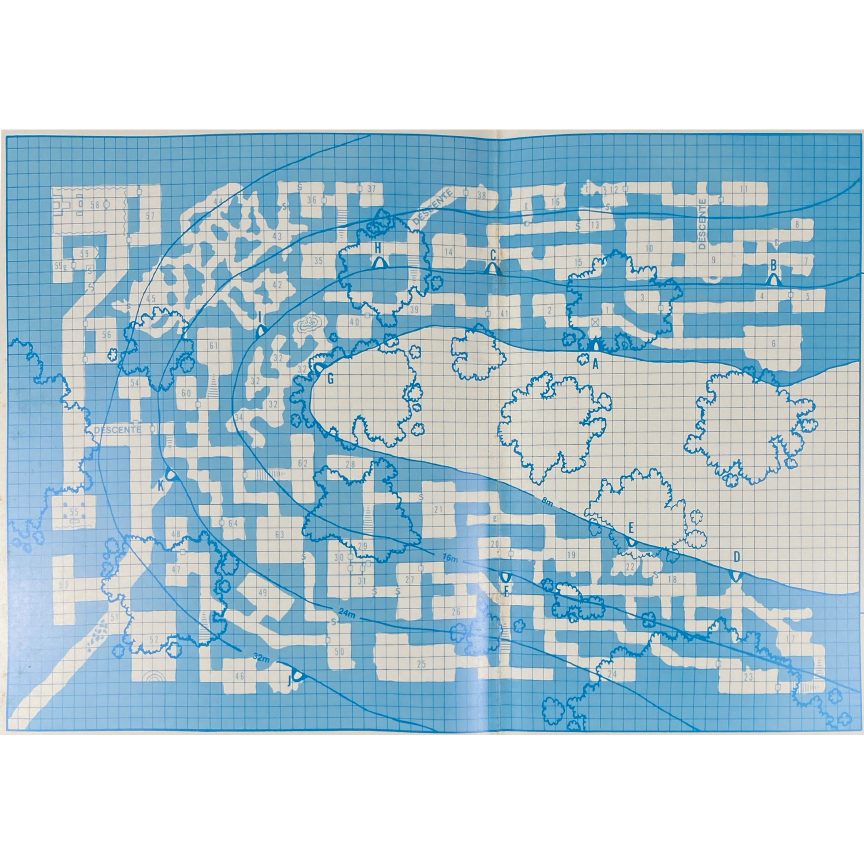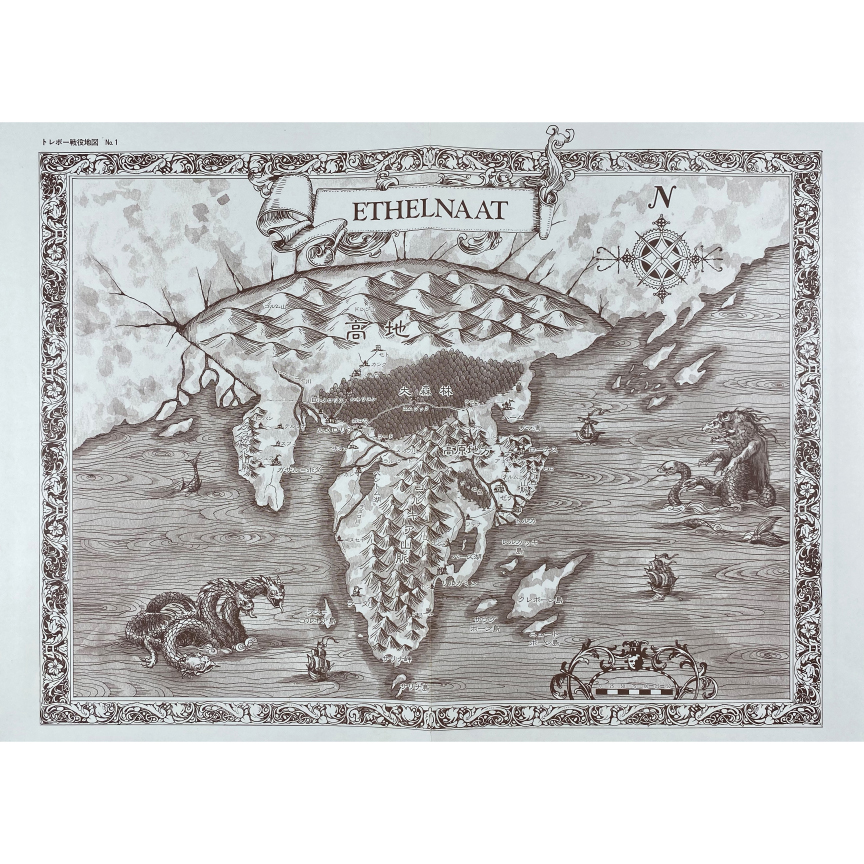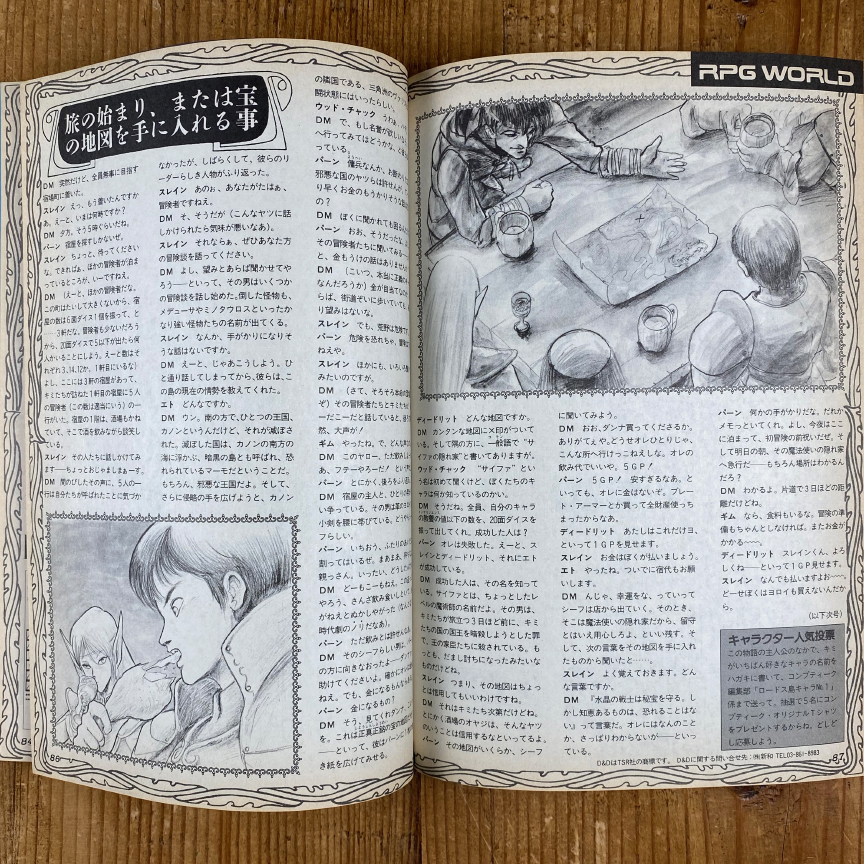研究基地ガンマ “Research Station Gamma” (1984) is the first item published in support of the Japanese Traveller box set. It is a translation by Hitoshi Yasuda of GDW’s second adventure for Traveller, but Hobby Japan also included translations of the first three supplements and made a box set out of it. Box cover art is by Naoyuki Kato.
In the adventure the players are stranded on Vanejen, a world in the Rhylanor subsector. To raise credits for passage off-world, the players enter the service of a “Chirper”, which is the winged creature crouching behind the security robot on the cover. Some of its siblings are trapped in the titular Research Station Gamma which the Imperium built to house and study alien life forms. The research station is run by three types of robots, and although the English version already had illustrations of them, Naoyuki Kato re-imagined them for the JV.
The icosahedral hex map of the planet Vanejen is inconveniently small in the English version, but the JV fixes this. BTW, the polygons at the vertices of the icosahedron only have five sides, so strictly speaking these should be called a hex-pent maps.
1001 Characters is a sort of Rogues Gallery. It concludes with Traveller stats for 9 characters from science fiction novels which some consider to be oblique references to the “Appendix N” of Traveller. The characters are not named, but the first is clearly John Carter from “A Princess of Mars”. I don’t recognize the second character with the impressive UPP of FFFFFF.
Box contents:
• Research Station Gamma, letter-sized booklet, 28 pp.
• Supplement 1: 1001 Characters, letter-sized booklet, 52 pp.
• Supplement 2: Animal Encounters, letter-sized booklet, 44 pp.
• Supplement 3: The Spinward Marches, letter-sized booklet, 24 pp.
• How to Use Research Station Gamma, letter-sized pamphlet, 4 pp.
• Map of Vanejen, letter-sized sheet
• Research Station Gamma Player’s Handout, letter-sized sheet
• Map of Research Station Gamma, 10″x14″ sheet folded
• Illustrations of Robots, 4″x9.5″
• Submersibles, 6″x11.5″
